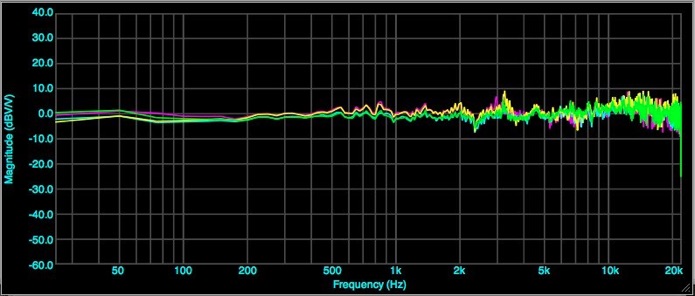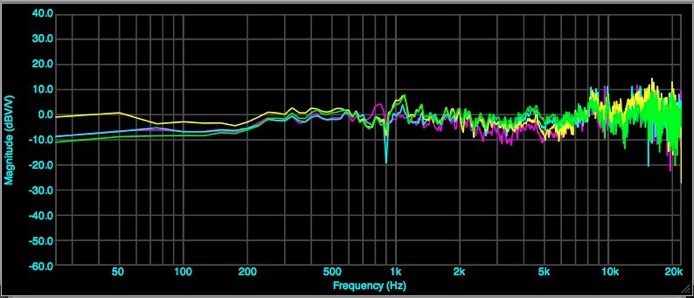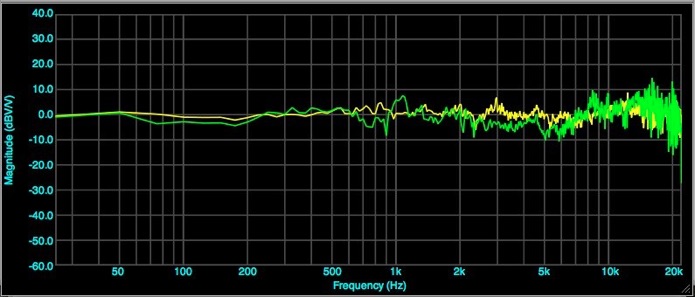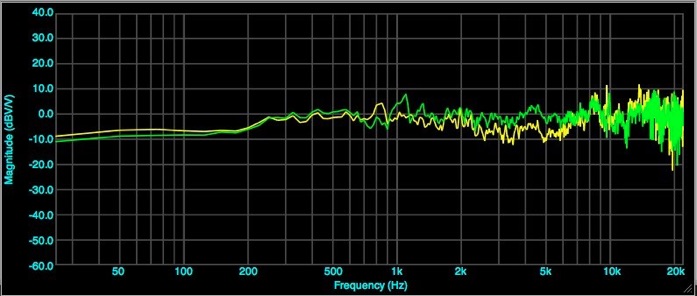More MXL Measurements

More MXLs Measured
Saturday, January 12, 2013

Another two MXL 990 / 991 sets were modified and the frequency response measured. Bear in mind that raw frequency response is only one aspect of a microphone’s sound. The measurement setup is also critical, and my setup isn’t necessarily comparable to anyone else’s. It’s fair to compare one of my response curves to another, but not to anything a manufacturer or anyone else may publish.
These are raw, unsmoothed FFTs derived from pseudo-random pink noise in my workroom. The mic under test was placed next to my Dayton Emm-6 s/n 3823 reference mic and the two are compared. Mics are 24” from the speaker. FFT response window is 25 Hz wide, so in effect the resolution gets better at high frequency. Most other people’s response curves are smoothed to 1/3 octave which gets rid of a lot of the “noise” at the top end, so concentrate on trends. Note also that the reference mic is omnidirectional, so it picks up room artifacts more than the MXLs which are cardioid. Lots of faults. Still, there is useful info here.
After modifying another pair of 990s and 991s, response measurements were repeated.

First, comparison between similar mics shows what sort of repeatability you can expect after tinkering with your microphones. In general, it’s pretty good. Here are the four 991s after mod.
They are all close enough to serve as stereo pairs or a quad if you’re feeling exotic.

Here are the four 990 side address mics. A bit more spread here, but general character remains.

Comparing the 990 to the 991 reveals the effects of the body shape and head basket. Yellow is the 991 pencil mic, green is the 990 side address body with inner layer of screen removed. Advantage to the more open pencil style. Same capsule design and modification in each case.

Finally, two of the 990 capsules had the acoustic resistance plates (the clear plastic ones with the eight small holes) drilled out so the holes were no longer effective, the small brass washers were discarded, and a cotton felt washer the diameter of the body was installed between the brass backplate and the opened-up resistance plate. The capsule was tightened up to compress the cotton by about 50%, to 1/16 inch. The felt serves as a new acoustic delay and low-pass filter. It offers a slightly flatter response in the 990 body. Yellow = original, green = felt.
The felt capsules haven’t been tried on the pencil bodies yet.
The felt delay washers were a work-around after an experiment drilling out the delay plates to see if the capsule would become a fig-8 pattern. It did, but the diaphragm tension and backplate tuning were too far off for my purpose (sounded too weird on too many things), so I reverted to cardioid pattern. Further experiments with various materials and amounts of squeeze may follow. The fig-8 config did sound nice, warm and crisp, for male voice-over.

